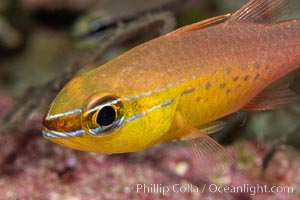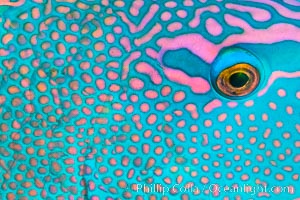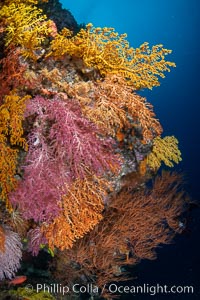
Colorful Chironephthya soft coral coloniea in Fiji, hanging off wall, resembling sea fans or gorgonians.
Location: Vatu I Ra Passage, Bligh Waters, Viti Levu Island, Fiji
Image ID: 34718
Location: Vatu I Ra Passage, Bligh Waters, Viti Levu Island, Fiji
Image ID: 34718
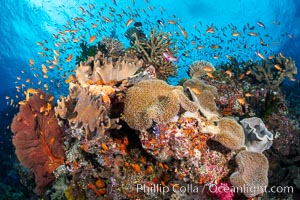
Anthias fishes school in strong currents above hard and soft corals on a Fijian coral reef, Fiji.
Species: Anthias, Pseudanthias
Location: Bligh Waters, Fiji
Image ID: 34719
Species: Anthias, Pseudanthias
Location: Bligh Waters, Fiji
Image ID: 34719
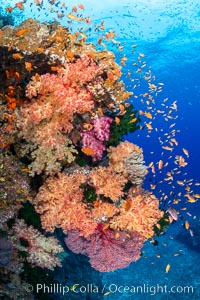
Brilliantlly colorful coral reef, with swarms of anthias fishes and soft corals, Fiji.
Species: Anthias, Dendronephthya soft coral, Dendronephthya, Pseudanthias
Location: Bligh Waters, Fiji
Image ID: 34720
Species: Anthias, Dendronephthya soft coral, Dendronephthya, Pseudanthias
Location: Bligh Waters, Fiji
Image ID: 34720
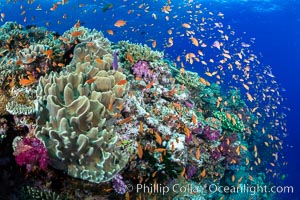
Anthias fishes school in strong currents above hard and soft corals on a Fijian coral reef, Fiji.
Species: Anthias, Pseudanthias
Location: Bligh Waters, Fiji
Image ID: 34721
Species: Anthias, Pseudanthias
Location: Bligh Waters, Fiji
Image ID: 34721
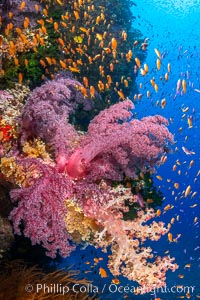
Brilliantlly colorful coral reef, with swarms of anthias fishes and soft corals, Fiji.
Species: Anthias, Dendronephthya soft coral, Dendronephthya, Pseudanthias
Location: Bligh Waters, Fiji
Image ID: 34722
Species: Anthias, Dendronephthya soft coral, Dendronephthya, Pseudanthias
Location: Bligh Waters, Fiji
Image ID: 34722
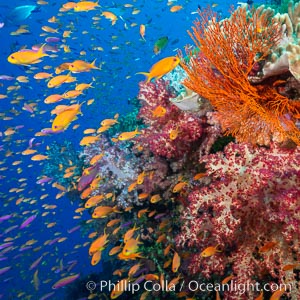
Brilliantlly colorful coral reef, with swarms of anthias fishes and soft corals, Fiji.
Species: Anthias, Dendronephthya soft coral, Dendronephthya, Pseudanthias
Location: Bligh Waters, Fiji
Image ID: 34723
Species: Anthias, Dendronephthya soft coral, Dendronephthya, Pseudanthias
Location: Bligh Waters, Fiji
Image ID: 34723
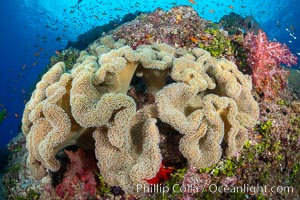
Sarcophyton leather coral on coral reef, Fiji.
Species: Sarcophyton soft coral, Sarcophyton
Location: Gau Island, Lomaiviti Archipelago, Fiji
Image ID: 34724
Species: Sarcophyton soft coral, Sarcophyton
Location: Gau Island, Lomaiviti Archipelago, Fiji
Image ID: 34724
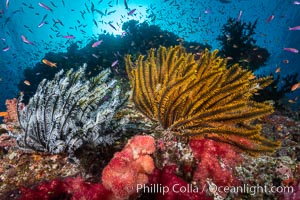
Crinoid (feather star) extends its tentacles into ocean currents, on pristine south pacific coral reef, Fiji.
Species: Crinoid feather star, Crinoidea
Location: Namena Marine Reserve, Namena Island, Fiji
Image ID: 34725
Species: Crinoid feather star, Crinoidea
Location: Namena Marine Reserve, Namena Island, Fiji
Image ID: 34725
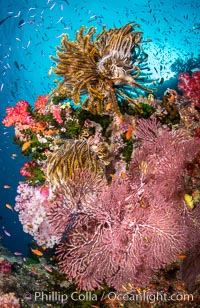
Beautiful South Pacific coral reef, with Plexauridae sea fans, schooling anthias fish and colorful dendronephthya soft corals, Fiji.
Species: Anthias, Dendronephthya soft coral, Gorgonian, Dendronephthya, Gorgonacea, Pseudanthias
Location: Namena Marine Reserve, Namena Island, Fiji
Image ID: 34726
Species: Anthias, Dendronephthya soft coral, Gorgonian, Dendronephthya, Gorgonacea, Pseudanthias
Location: Namena Marine Reserve, Namena Island, Fiji
Image ID: 34726
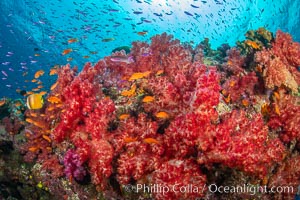
Brilliantlly colorful coral reef, with swarms of anthias fishes and soft corals, Fiji.
Species: Anthias, Dendronephthya soft coral, Dendronephthya, Pseudanthias
Location: Namena Marine Reserve, Namena Island, Fiji
Image ID: 34727
Species: Anthias, Dendronephthya soft coral, Dendronephthya, Pseudanthias
Location: Namena Marine Reserve, Namena Island, Fiji
Image ID: 34727
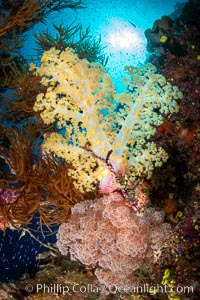
Closeup view of colorful dendronephthya soft corals, reaching out into strong ocean currents to capture passing planktonic food, Fiji.
Species: Dendronephthya soft coral, Dendronephthya
Location: Namena Marine Reserve, Namena Island, Fiji
Image ID: 34728
Species: Dendronephthya soft coral, Dendronephthya
Location: Namena Marine Reserve, Namena Island, Fiji
Image ID: 34728
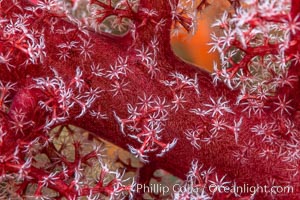
Dendronephthya soft coral detail including polyps and calcium carbonate spicules, Fiji.
Species: Dendronephthya soft coral, Dendronephthya
Location: Namena Marine Reserve, Namena Island, Fiji
Image ID: 34729
Species: Dendronephthya soft coral, Dendronephthya
Location: Namena Marine Reserve, Namena Island, Fiji
Image ID: 34729
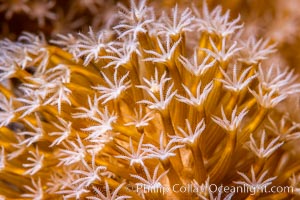
Sarcophyton leather coral polyp detail, close up view, Fiji.
Species: Sarcophyton soft coral, Sarcophyton
Location: Namena Marine Reserve, Namena Island, Fiji
Image ID: 34730
Species: Sarcophyton soft coral, Sarcophyton
Location: Namena Marine Reserve, Namena Island, Fiji
Image ID: 34730
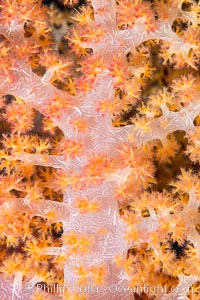
Dendronephthya soft coral detail including polyps and calcium carbonate spicules, Fiji.
Species: Dendronephthya soft coral, Dendronephthya
Location: Namena Marine Reserve, Namena Island, Fiji
Image ID: 34731
Species: Dendronephthya soft coral, Dendronephthya
Location: Namena Marine Reserve, Namena Island, Fiji
Image ID: 34731
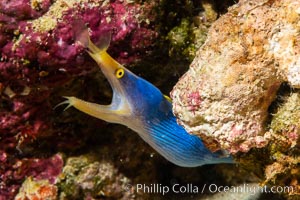
Blue ribbon eel, Rhinomuraena quaesita, leafnose moray eel, Fiji.
Species: Blue ribbon eel, Rhinomuraena quaesita
Location: Namena Marine Reserve, Namena Island, Fiji
Image ID: 34732
Species: Blue ribbon eel, Rhinomuraena quaesita
Location: Namena Marine Reserve, Namena Island, Fiji
Image ID: 34732
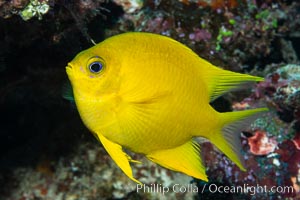
Golden Damselfish, Fiji.
Species: Golden damselfish, Amblyglyphidodon aureus
Location: Namena Marine Reserve, Namena Island, Fiji
Image ID: 34734
Species: Golden damselfish, Amblyglyphidodon aureus
Location: Namena Marine Reserve, Namena Island, Fiji
Image ID: 34734
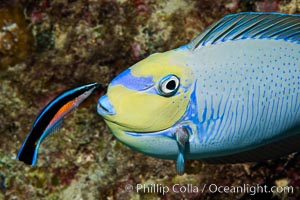
Bignose Unicornfish, Naso vlamingii, being cleaned by a small wrasse, Fiji.
Species: Bignose unicornfish, Naso vlamingii
Location: Namena Marine Reserve, Namena Island, Fiji
Image ID: 34735
Species: Bignose unicornfish, Naso vlamingii
Location: Namena Marine Reserve, Namena Island, Fiji
Image ID: 34735
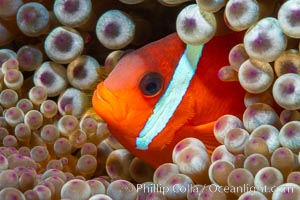
Fiji Barberi Clownfish, Amphiprion barberi, hiding among anemone tentacles, Fiji.
Species: Fiji barberi clownfish, Amphiprion barberi
Location: Namena Marine Reserve, Namena Island, Fiji
Image ID: 34736
Species: Fiji barberi clownfish, Amphiprion barberi
Location: Namena Marine Reserve, Namena Island, Fiji
Image ID: 34736
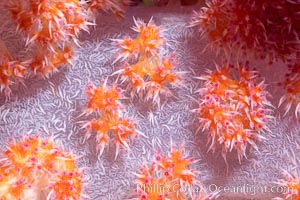
Dendronephthya soft coral detail including polyps and calcium carbonate spicules, Fiji.
Species: Dendronephthya soft coral, Dendronephthya
Location: Namena Marine Reserve, Namena Island, Fiji
Image ID: 34738
Species: Dendronephthya soft coral, Dendronephthya
Location: Namena Marine Reserve, Namena Island, Fiji
Image ID: 34738
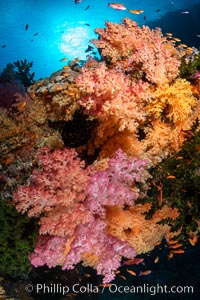
Colorful and exotic coral reef in Fiji, with soft corals, hard corals, anthias fishes, anemones, and sea fan gorgonians.
Species: Anthias, Dendronephthya soft coral, Dendronephthya, Pseudanthias
Location: Fiji
Image ID: 34739
Species: Anthias, Dendronephthya soft coral, Dendronephthya, Pseudanthias
Location: Fiji
Image ID: 34739
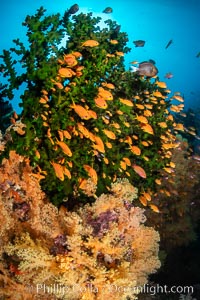
Anthias fish school around green fan coral, Fiji.
Species: Anthias, Pseudanthias
Location: Fiji
Image ID: 34740
Species: Anthias, Pseudanthias
Location: Fiji
Image ID: 34740
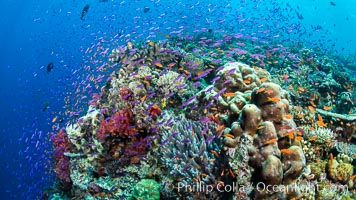
Anthias fishes school in strong currents over a Fijian coral reef, with various hard and soft corals, sea fans and anemones on display. Fiji.
Species: Anthias, Pseudanthias
Location: Fiji
Image ID: 34741
Species: Anthias, Pseudanthias
Location: Fiji
Image ID: 34741
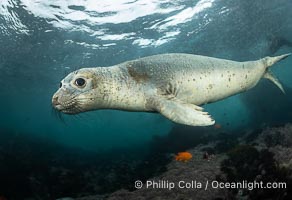
Juvenile Northern Elephant Seal Underwater, Coronado Islands, Mexico.
Species: Elephant seal, Mirounga angustirostris
Location: Coronado Islands (Islas Coronado), Baja California, Mexico
Image ID: 36465
Species: Elephant seal, Mirounga angustirostris
Location: Coronado Islands (Islas Coronado), Baja California, Mexico
Image ID: 36465
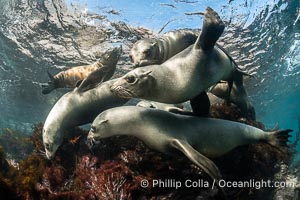
California Sea Lions Underwater, Coronado Islands, Baja California, Mexico.
Species: California sea lion, Zalophus californianus
Location: Coronado Islands (Islas Coronado), Baja California, Mexico
Image ID: 36467
Species: California sea lion, Zalophus californianus
Location: Coronado Islands (Islas Coronado), Baja California, Mexico
Image ID: 36467
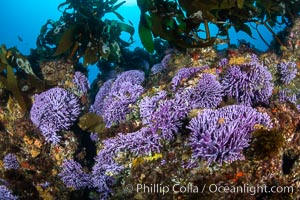
California reef covered with purple hydrocoral (Stylaster californicus, Allopora californica), Farnsworth Banks.
Species: Hydrocoral, Allopora californica, Stylaster californicus
Location: Catalina Island, California
Image ID: 37177
Species: Hydrocoral, Allopora californica, Stylaster californicus
Location: Catalina Island, California
Image ID: 37177
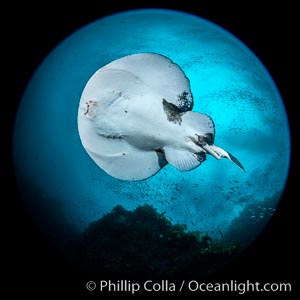
Pacific torpedo ray Tetronarce californica, amidst huge schools of fish and baitfish, Farnsworth Banks, Catalina Island. This electric ray will shock the hell out of you if you are not careful.
Species: Pacific torpedo ray, Tetronarce californica, Torpedo californica
Location: Catalina Island, California
Image ID: 37231
Species: Pacific torpedo ray, Tetronarce californica, Torpedo californica
Location: Catalina Island, California
Image ID: 37231
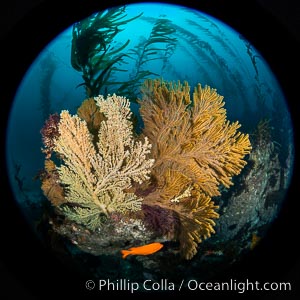
Parasitic zoanthid anemones cover, encrust and overwhelm a golden gorgonian. The gorgonian on the left has been completely parasitized by zoanthid anemones, while the gorgonian to the right remains free of zoanthids (for now). A garibaldi swims below the two sea fans. The golden gorgonian is a filter-feeding temperate colonial species that lives on the rocky bottom at depths between 50 to 200 feet deep. Each individual polyp is a distinct animal, together they secrete calcium that forms the structure of the colony. Gorgonians are oriented at right angles to prevailing water currents to capture plankton drifting by.
Species: California golden gorgonian, Luminescent parazoanthid, Zoanthid anemone, Giant kelp, Muricea californica, Parazoanthus lucificum, Savalia lucifica, Macrocystis pyrifera
Location: San Clemente Island, California
Image ID: 38493
Species: California golden gorgonian, Luminescent parazoanthid, Zoanthid anemone, Giant kelp, Muricea californica, Parazoanthus lucificum, Savalia lucifica, Macrocystis pyrifera
Location: San Clemente Island, California
Image ID: 38493
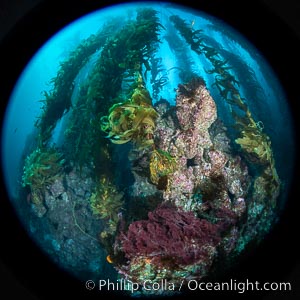
The Kelp Forest and Rocky Reef of San Clemente Island. Giant kelp grows rapidly, up to 2' per day, from the rocky reef on the ocean bottom to which it is anchored, toward the ocean surface where it spreads to form a thick canopy. Myriad species of fishes, mammals and invertebrates form a rich community in the kelp forest. Lush forests of kelp are found throughout California's Southern Channel Islands.
Species: Giant kelp, Macrocystis pyrifera
Location: San Clemente Island, California
Image ID: 38494
Species: Giant kelp, Macrocystis pyrifera
Location: San Clemente Island, California
Image ID: 38494
